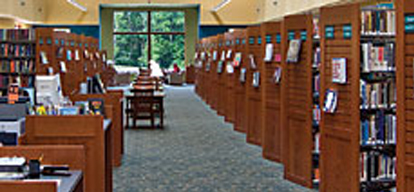
Education
Educational establishments in all their vast varieties and campus sizes can utilise the benefits of lighting control systems to provide highly cost effective ighting and energy saving solutions. Lighting typically accounts for more than half of a school’s electricity usage, making light control a growing necessity to eep costs in check
In Classrooms
 Clever and specific lighting scenes for the different age range of children can be programmed to huge benefit and research shows it can significantly improve child’s performance in the classroom.
Clever and specific lighting scenes for the different age range of children can be programmed to huge benefit and research shows it can significantly improve child’s performance in the classroom.
Colleges Lecture Halls
 Teaching methods on today’s college campuses have altered hugely. Video and computer displays are a common part of classroom learning. As the echnology of education evolves, new light control solutions are required to accommodate them, so that at a touch of a button, a lecturer can alter between presenting and teaching.
Teaching methods on today’s college campuses have altered hugely. Video and computer displays are a common part of classroom learning. As the echnology of education evolves, new light control solutions are required to accommodate them, so that at a touch of a button, a lecturer can alter between presenting and teaching.
Libraries
 The sanctuary of many students, often sited in multiple sections of the library requires different lighting levels as they utilise the benefits of the library. It is ot uncommon to have to accommodate existing skylights in campus libraries also. Various control systems can provide targeted control and automation to lluminate specific areas in a library, which whilst creating a more welcoming environment, can substantially reduce energy levels and operating costs.
The sanctuary of many students, often sited in multiple sections of the library requires different lighting levels as they utilise the benefits of the library. It is ot uncommon to have to accommodate existing skylights in campus libraries also. Various control systems can provide targeted control and automation to lluminate specific areas in a library, which whilst creating a more welcoming environment, can substantially reduce energy levels and operating costs.
Staircases & Corridors
 Staircases and corridors are an area where wasted light usage can be significantly reduced without endangering users. These areas are sometimes left noccupied for hours at a time, but need to be well-lit when a user enters the space. By utilising solutions in a systems, lights can be kept on at a dim level to meet local codes, and brighten the lights when the staircase is occupied, providing a safe path of light. Using these strategies can meet building codes and standards but for certain reduce a significant portion of the buildings total lighting energy usage.
Staircases and corridors are an area where wasted light usage can be significantly reduced without endangering users. These areas are sometimes left noccupied for hours at a time, but need to be well-lit when a user enters the space. By utilising solutions in a systems, lights can be kept on at a dim level to meet local codes, and brighten the lights when the staircase is occupied, providing a safe path of light. Using these strategies can meet building codes and standards but for certain reduce a significant portion of the buildings total lighting energy usage.
Administrative Offices
Modern office spaces increasingly are designed to increase both energy efficiency and employee productivity. These systems also provide personal control, allowing individuals to set lighting for any work-related activity. Occupancy and vacancy sensors can also be integrated to turn lights off when a space is unoccupied. We can suggest systems that automatically and comfortably adjust lighting and shading to efficiently balance electric light and available daylight. This can include blind controls also.







